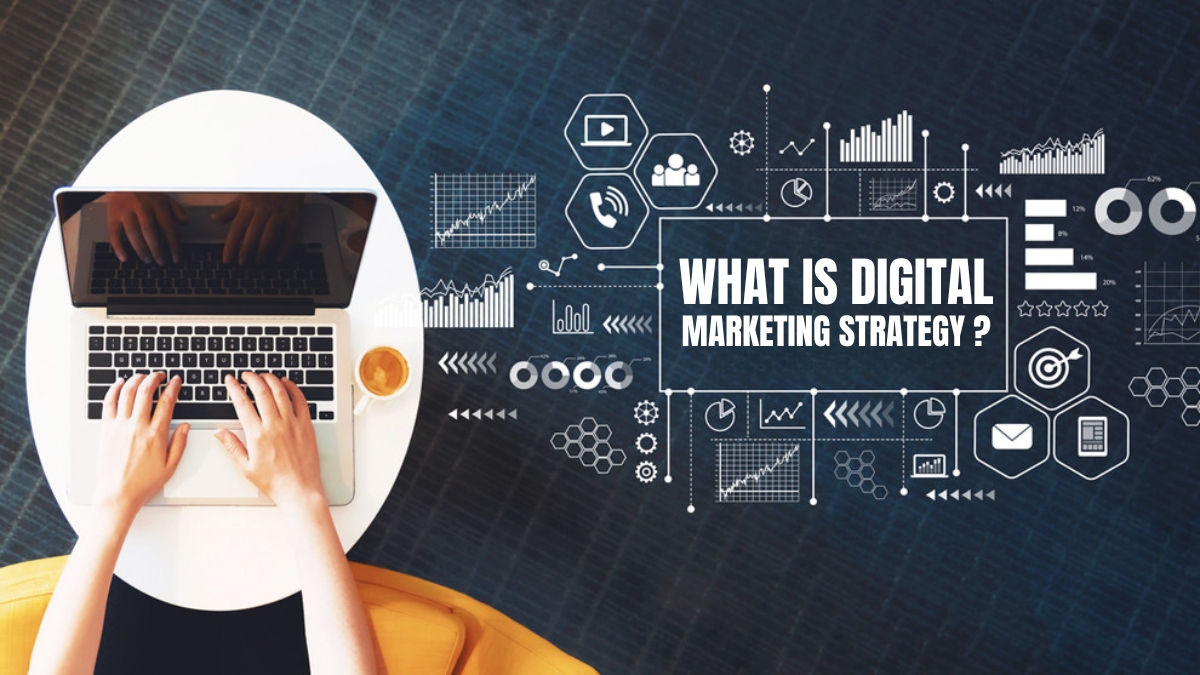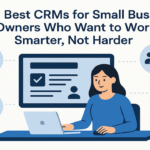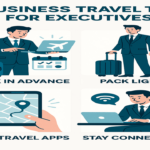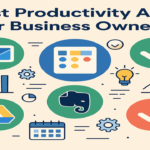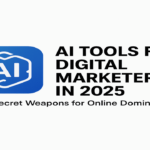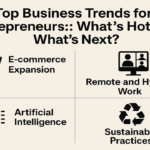An excellent digital marketing strategy is critical to organizational success in the modern age of business and technology. Companies that succeed in the digital environment devote time and money to developing digital marketing strategies. Learn more here.
On a higher level, marketing strategy is the process of determining specific marketing objectives. A comprehensive marketing plan will outline attainable objectives for traditional (print, radio, and broadcast) and digital marketing channels. Compelling marketers will assess various marketing methods essential to reach those strategic goals based on stated plans and goals.
Why do you need a digital marketing strategy?
Organizations can reach clients across numerous digital channels due to this approach, resulting in increased revenue and improved conversion rates.
- It motivates you to learn more
- It provides real data
- It structures your actions
- It helps to increase ROI
- It enables you to reconsider your relationships with the audience.
Making a strategy, in general, helps you move more consciously and thus more confidently, regardless of what you’re doing. Building a plan can help you in the following ways when it comes to digital marketing:
- It makes you want to study more. When creating a digital marketing strategy, you must consider every facet of your organization. To design a polished and up-to-date digital marketing plan, you must also extensively examine your audience, rivals, trends, and adjacent niches. Creating an outline is a fantastic way to understand your company better!
- It delivers accurate information. During the research and after putting your strategy into action, you’ll get detailed information about what works for your brand and what doesn’t during the study and after placing your plan into action. With that knowledge, you’ll be able to choose from various solutions for developing your company.
- It provides a framework for your actions. Creating a digital marketing strategy eliminates the confusion of having to make educated guesses without a plan. You will better grasp how to mix numerous marketing channels and fulfill your company’s full potential if you develop a strategy.
- It contributes to a higher return on investment. You make fewer actions and make fewer mistakes once your steps are ordered. You will be able to discover your weaknesses, forecast issues, and react fast if you have a well-crafted plan. Consequently, you will save time, money, and effort while increasing margins.
- It encourages you to reassess your interactions with the audience. A digital marketing plan allows you to take a new look at how you communicate with prospects and consumers throughout the buyer’s journey. When creating a business plan, you should concentrate on your clients, look for methods to add value to your connections, and develop innovative ways to interact with them.
So now that you know you need a digital marketing strategy let’s sketch one out.
Digital marketing strategy framework
When designing a digital marketing strategy, there is no one-size-fits-all solution. Maintain your critical thinking skills while following our recommendations and pick the most relevant tips for your brand.
Here’s a step-by-step scheme.
Step 1: Research and define your goals
First and foremost, consider whether you can improve your existing content to rank higher on Google. Here’s what we can do with it if we concentrate on SEO:
- To rank higher, structure your material according to Google’s algorithm.
- To make your page load faster, reduce the size of your photographs.
- To demonstrate a solid reputation, get connected to relevant and authoritative websites.
- Then compare your content to those of your competitors. Maybe they’ve covered something you didn’t realize was important. You may use Ahrefs or Moz to see which of your competitors’ pages rank in the top ten for specific keywords and utilize this information to cover these themes yourself.
Perhaps your findings will lead you to share additional video content or include more customer input on your sites.
It’s also fine to question individuals about their thoughts on your brand and what they’d want to see improved in your mutual relationship. You won’t receive a 100 percent response rate, but you’ll almost certainly gain new information about your digital marketing agency approach.
Importantly, select digital marketing channels that are most suited to your company. Working with too many media at once is not a good idea; instead, introduce one track at a time as needed.
So, after you’ve done your study, make a list of attainable goals based on the information you’ve gleaned.
Step 2: Collect data about your audience
Perhaps your findings will lead you to share additional video content or include more customer input on your sites.
It’s also fine to question individuals about their thoughts on your brand and what they’d want to see improved in your mutual relationship. You won’t receive a 100 percent response rate, but you’ll almost certainly gain new information about your digital marketing approach.
Importantly, select digital marketing channels that are most suited to your company. Working with too many channels at once is not a good idea; instead, introduce one channel at a time as needed.
So, after you’ve done your study, make a list of attainable goals based on the information you’ve gleaned.
Step 3: Generate leads
The next phase will improve lead generation and look for new approaches. You may get started using SendPulse’s free subscription forms to gain subscribers. You can use this form to collect users’ email addresses, names, phone numbers, and other personal information for subsequent communication. By connecting links to your messengers, you can create multichannel forms. The layout of our user-friendly subscription form builder is as follows:
With Google Ads, you can also collect subscribers by using highly targeted display advertising. Retargeting is a service that allows you to display relevant advertising based on a user’s search history. This is an example of an ad that appears since the user previously searched for copywriting courses on Google.
Another excellent channel is Facebook to keep your relationships new, offering that your existing audience communicates with you through a different media. For example, you may ask your Facebook audience to share their email address in a chatbot. Alternatively, you may send them an email newsletter inviting them to subscribe to your Facebook chatbot.
There are a few other methods for generating leads based on virality. For example, you may hold prizes to entice individuals to join your mailing list.
To serve the giveaways and deliver notifications, consider combining Facebook or Instagram with giveaway emails. An example of a Facebook giveaway that was utilized to raise the number of subscribers and make the company more recognizable is shown below.
Another way to build your audience is via influencer marketing. This is when a famous person, respected by thousands of subscribers, shares information about your brand and encourages their audience to check it out. It is a practical marketing approach because people regard it as a recommendation from someone they trust more than advertising. Below is an example of an influencer marketing post on Instagram.
Step 4: Nurture leads
After they’ve started communicating with your brand, lead nurturing guides them toward making a purchase. You can do it via emails, chatbots, and social media, but the most important thing is how you do it.
You must educate your audience, provide value to their existence in your contact list, and market your company in a non-intrusive manner at the same time. For example, using a welcome email, aim to make their onboarding as simple as possible.
You may also encourage your audience to provide more data for better-personalized content and offers. For example, sending a survey email is a fantastic method to engage, entertain, and nurture your readers. Let the receivers know that the survey will not take up too much time.
Furthermore, sharing material based on the user’s state in the buyer journey is a good idea. Depending on how near consumers are to making a purchase, gradually shift the goal of your content from instructive to conversion-focused.
Step 5: Take care of returning clients and advocates
It shouldn’t be the end of your connection with a user once they’ve purchased from you. In the follow-up email, thank your client for their purchase, ask for feedback or a review, and try to cross-sell.
To increase repeat consumers, provide a superior customer experience and high-quality items. Make them feel like a VIP by providing exclusive customized offers and unique content.
Customers can also be enticed to become brand ambassadors by offering them incentives in exchange for suggesting others.
Step 6: Set up marketing automation
When you’ve figured out what works and doesn’t for your digital marketing plan, you can automate operations to make them more efficient.
You may quickly set up automatic email workflows to send sequences of emails to subscribers at different phases of their journey – onboarding, purchasing, cart abandonment, and so on. The example below demonstrates how to deal with a cart that has been abandoned.
This post will show you how to set up an email process with SendPulse in less than an hour.
Chatbots are also an excellent way to relieve tension in your sales and customer service personnel. Chatbots on Facebook Messenger and Telegram may answer questions, book hotel rooms, and even assist with job applications.
SendPulse allows businesses to develop a chatbot for Facebook Messenger and Telegram without having to code. You can quickly create auto-replies for your chatbots using our user-friendly builder. Booking.com is an excellent example of a chatbot where a virtual assistant helps you choose a holiday spot and book a room.
Pillars of digital marketing
There are three pillars in digital marketing. They are:
- User-journey
- Digital channels
- Creativity and content
User-journey
The user journey is the first pillar of digital marketing. The customer’s encounter and interaction with your brand across all digital and non-digital channels shape his emotions and impressions of your brand.
It usually begins with the stage of awareness and finishes with the set of purchases or advocacy (loyalty):
- Awareness: The customer is first aware of the brand.
- Consideration (interest/evaluation): The customer needs to evaluate his decision and consider other brands.
- Purchase (desire/action): The customer is ready to make a purchase.
- Advocacy (loyalty): The customer spreads word of mouth and recommends the brand to his friends.
After interacting with your creatives or content on multiple digital platforms (social media, search, display ads).
When somebody visits your website or downloads your mobile app, your goal is to persuade him to complete critical conversions, such as filling out a contact form or adding a product to a shopping cart.
Digital channels
Digital marketing channels are the second pillar of digital marketing. A marketing channel is a means that businesses employ to engage with customers or convey messages.
Digital channels are outlets for your customers to learn about your business and what it offers in digital marketing. This is where your users (Traffic) originate from.
The following are some examples of digital marketing channels:
- Organic Search (e.g., Google)
- Paid Search
- Display
- EmailSocial Media
- Referral (e.g., Traffic through other websites)
Organic search
People use search engines for various reasons, including research, shopping, and entertainment; Google alone processes over 40,000 searches per second (3.5 billion search queries per day).
Marketers use a digital marketing method known as search engine optimization to position a website at the top of organic search engine results pages (SERPs) (SEO).
Paid search
The paid search advertising results are displayed at the very top of the SERPs. m To advertise your website on Google’s paid search ad results, you’ll need to create a Google Ads account and use a digital marketing approach called search engine marketing (SEM).
Display
The display channel refers to ad placements on web pages when users browse them.
According to Statista, there will be approximately 4 billion email subscribers in 2020. Today, email remains one of the most common ways for businesses to communicate with their consumers.
To deliver targeted and relevant emails to correctly segmented email subscribers, digital marketers use digital marketing tactics such as email marketing and marketing automation.
Social media
There is no need to explain what social media is. People use it daily to stay up with news and communicate with friends and family worldwide.
Businesses use social media to engage with potential customers more personally and honestly. You will be able to grasp the demands and interests of your target audience across multiple social media platforms with the use of various social media marketing tools. This will allow you to better personalize your material to your target audience’s preferences.
Referral
Users click on hyperlinks (backlinks) to navigate from one website to another, resulting in referral traffic (the hyperlink target or website). This refers to Traffic from other websites rather than a Google search.
Referral links are formed due to earned media or strategic web collaborations. One of the most successful ways to get brand mentions and backlinks and raise brand recognition is to use online public relations.
Creativity and content
It should come as no surprise that the most crucial aspect of the content marketing process is developing content and that content development demands the most time, creativity, and productivity.
To generate strong content, you must first be able to successfully ideate, draft, revise, and optimize it to ensure that it achieves precisely what you want it to do and performs well.
The importance of creativity and productivity in this process cannot be overstated. However, most organizations demand large-scale content production, and retaining creativity and productivity on a grander scale can be difficult.
Almost every marketing team’s ability to force a steady supply of great, unique content is above their skills, but you won’t have to with a minor modification to your method.
Almost no marketing team can force a steady stream of creative, unique material. However, with a bit of modification to your method, you can still produce fresh content without having new ideas every day.
Material atomization, or replicating content in various formats, implies that the same creativity can be used to achieve multiple objectives and reach numerous people. Creating blog posts, videos, infographics, and other content from the same creative concept allows your material to reach a wider audience and work harder.
Using the best tools and methods to create the correct content lays a firm foundation for the rest of your content marketing pillars.
How do the different digital channels impact the business?
These are just a few examples of digital marketing channels; regardless of whatever you choose, it’s critical to examine digital marketing analytics reports to determine which digital media provides the best return on investment to spend the appropriate funds.
Multichannel digital marketing efforts, such as search engine marketing, content marketing, display advertising, and email marketing, are common in digital marketing campaigns.
This should not be confused with omnichannel, which, like multichannel, entails interacting with customers through numerous channels. Providing a consistent, unified, and smooth customer experience regardless of whether a customer interacts with a company on social media, at a physical store, or online is more correctly defined as omnichannel.
Omni-channel methods include physical brochures with QR codes that direct customers back to the online store and membership systems that modify product suggestions based on customer purchase history.
To enhance target market reach and lead nurturing, digital marketing may and should be used with offline marketing channels such as print advertisements, live industry events, popup booths, and in-store promotions.
Launching a trade fair (offline) and a Facebook Advertising campaign (online) to promote the offline event is an example of an online/offline marketing synergy. It also gathers personal information from prospects, such as emails and phone numbers during the event (offline), to follow up via email and mobile marketing (online).
Types of digital marketing
Search Engine Optimization, Pay-per-Click, Social Media Marketing, Content Marketing, Email Marketing, Mobile Marketing, Marketing Analytics, and Affiliate Marketing are the eight critical categories of digital marketing.
Digital marketing has become a critical component of an organization’s entire marketing strategy over the last decade. It enables businesses to target their communications to a specific audience, allowing them to market directly to people who are likely interested in their product.
Some of the most popular types of digital marketing provide a brief overview of each.
Pay-per-click (PPC)
Paid adverts and sponsored search engine results are referred to as pay-per-click. This is a short-term form of digital marketing, which means the ad will disappear once you stop paying. PPC, like SEO, is a strategy to boost a company’s internet search traffic.
Advertisements that appear at the top and sides of a page of search results, ads that appear when browsing the web, commercials that appear before YouTube videos, and ads that appear in mobile apps are all examples of pay-per-click advertising.
Social media marketing
This encompasses everything a company does on social media. Although almost everyone is familiar with social media, marketers must use it in a planned and integrated manner. Social media marketing entails merely posting to social media sites and responding to comments.
Efforts must be organized and consistent rather than an afterthought if they are effective. There are several online tools available to automate and schedule social media postings to help keep messages consistent. Still, marketers should only use automation as a tool, not as a “set it and forget it” solution. If there is no genuine person behind the posts, users will immediately figure it out.
Content marketing
To raise brand awareness, content marketing employs narrative and information sharing. The ultimate goal is for the reader to take a step toward becoming a customer, such as seeking additional information, joining an email list, or purchasing something.
Blog entries, resources like white papers and ebooks, digital videos, podcasts, and much more are examples of “content.” It should, in general, first and foremost deliver value to the consumer rather than market the brand or try to sell something. Content marketing is about developing a long-term, trustworthy relationship with your customers that can lead to multiple sales over time rather than just one.
Content marketing works in tandem with other forms of digital marketing: it’s a means to combine SEO search terms into new website content, and the results may be disseminated via social media and email marketing. Analyzing your content marketing statistics may reveal a lot about your customers: what are they looking for when they visit your site? What information entices people to stay longer on the site and explore around? What types of things pique their interest and cause them to leave?
Email marketing
According to Rogers, despite the rise of social media, smartphone apps, and other platforms, email remains one of the most effective marketing tools. It can be used as part of a content marketing plan to provide value to customers and convert them into customers over time. According to the American Marketing Association, email marketing professionals are competent at creating compelling messages and understanding appropriate audience outreach and monitoring consumer interactions and data, as well as making strategic decisions based on that data.
Mobile marketing
This sort of digital marketing aims to reach out to your target demographic via their smartphone or tablet. Text messages, social media, websites, email, and mobile applications are examples of mobile marketing. Marketers can customize offers or unique content based on a customer’s location or time, such as when they enter a store or attend an event.
Marketing analytics
Digital marketing is supremely trackable and measurable, one of its main advantages. Coupons and other direct mail offers were once the sole trackable marketing materials. You knew the message had hit home when a customer used the coupon.
Today, analytics allow marketers to watch user behavior down to the smallest detail: how many times they click on a link, how long they stay on a website, how often they open emails, etc. However, the massive amount of data accessible on digital marketing effectiveness can feel like sipping from a fire hose, and marketers must properly comprehend what the numbers represent and how they should be used to inform strategy.
Affiliate marketing
Affiliate marketing, also known as influencer marketing, has been popular among many organizations to bridge the gap between customers and businesses as online marketing has grown insignificantly. But, first and foremost, what is affiliate marketing?
Affiliate marketing uses industry experts and social media influencers’ ever-increasing popularity. Your company will partner with these third-party influencers to promote your products or services in exchange for money. Influencers will engage their audiences through posts, blogs, or videos as part of a collaboration to bring in more business and generate new leads for your company.
The bottom line
One of the most effective ways to attract new customers and achieve your business objectives is through digital marketing. It also provides several tactics, such as video, email, and social media, to help you achieve your specific goals. Digital marketing is the way to go if you want to improve sales, revenue, awareness, or loyalty.
Your firm can benefit greatly from a digital marketing plan. There are numerous online outlets from which to pick. Price, outreach potential, usefulness, and purpose are all different. What you need is a well-balanced channel mix tailored to your company’s needs.
Whatever channels and tactics you choose, we advocate not sticking to a single strategy, especially if it doesn’t work out as planned, giving plenty of room for experimentation.
